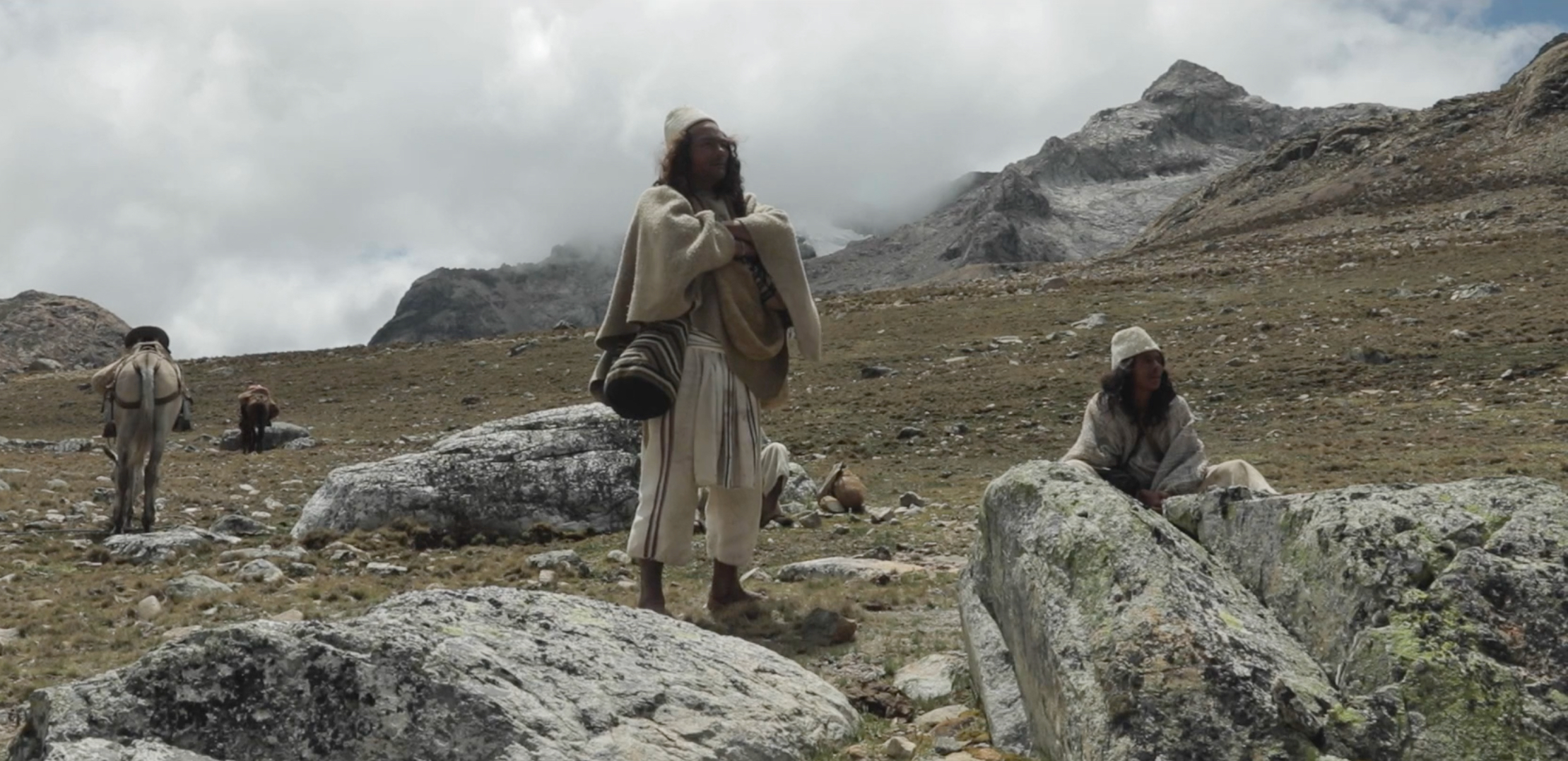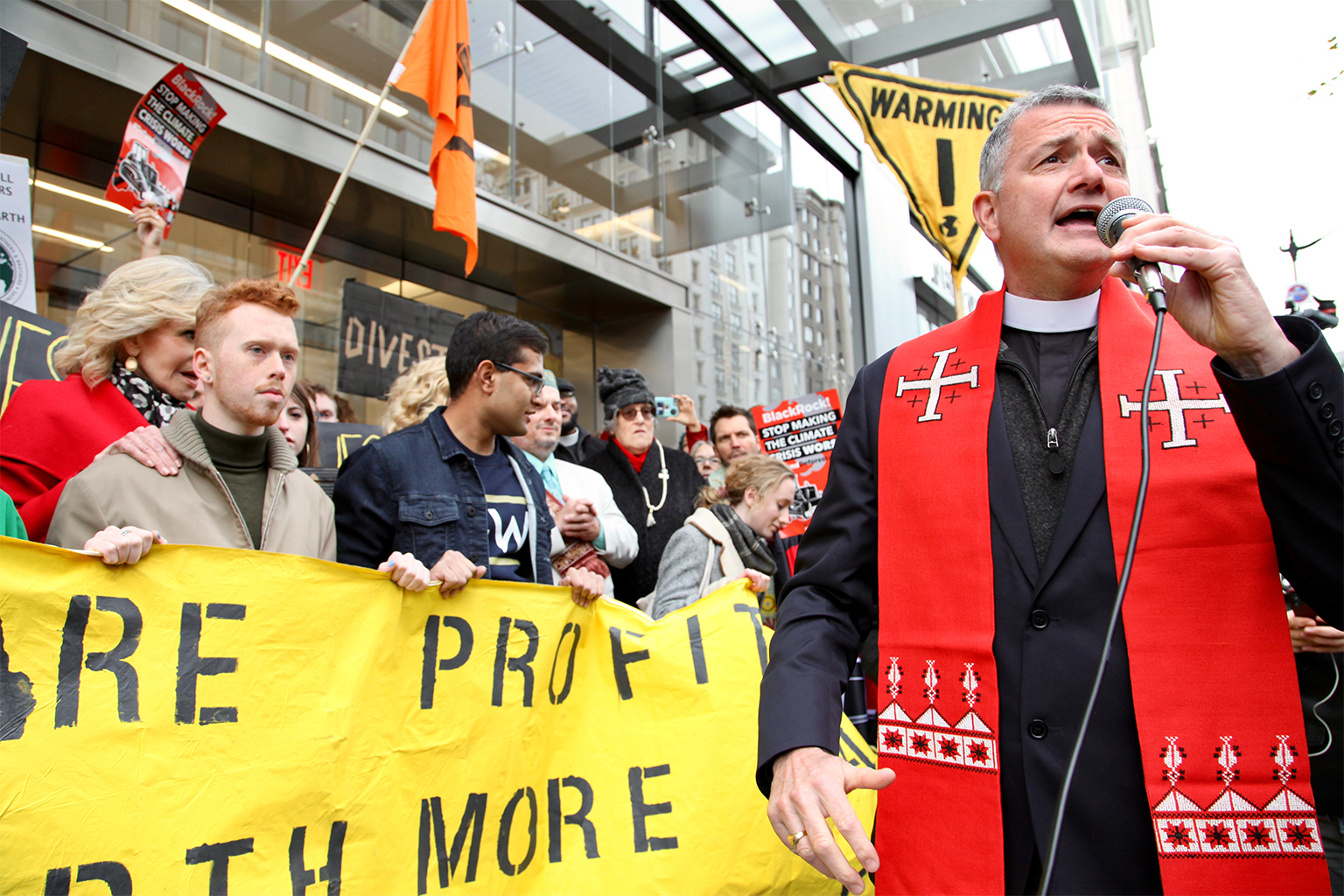For many Indigenous peoples, local communities, and believers worldwide, religion and spirituality play a central role in how they understand the universe, relate to the land, evaluate morals, and curb their behavior. It has wide-reaching implications in how people know and act, influencing how humanity interprets, copes with, and alleviates the planetary emergency. To date, religious believers make up most of the Earth’s population.
For Indigenous peoples and local communities (IPLCs), ritual and intimate connections to nature are inherent in many spiritual traditions. These reverential relationships to sacred living places are vital for understanding how communities mobilize and persevere against ongoing industrial-scale environmental destruction. Cultural identity and a sense of belonging to ancestral lands are also vital dimensions of narratives relevant to IPLCs.
Broader organized religious teachings about nature, such as Pope Francis’ climate advocacy or moral systems within Islam and Buddhism, also serve as a platform that spurs action, creates a sense of belonging, and builds an appreciation for Creation. However, some religious groups can also further environmental harms, as exemplified in this video about the role of religious colonies in accelerating Amazon deforestation through their organizational structure, history, and ethos.

The Mamos begin their apprenticeship in their infancy, developing relationships with the animals, the plants, the elements, and the spiritual beings in other dimensions — learning to read Nature like a book. Image courtesy of The Esperanza Project.
Series objectives
This project aims to explore how reverential relationships to sacred living places and religious teachings are vital for understanding how people mobilize and persevere against ongoing industrial-scale environmental destruction. The series will also examine how religious groups’ actions, teachings or leadership can further environmental harms.
Stories can cover any region (with a preference for biodiversity hotspots) and will include the nuance and complexity of spiritual practices in a changing world/locality. Underreported stories and angles that push the boundaries of knowledge available to the public are preferred, and a few stories will include field reporting. Key sources are elders, healers, and Indigenous and rural women.
We are also looking to produce a couple of professional and high-quality long-form videos shot from the tropics.

The Rev. Fletcher Harper, an Episcopal pastor and executive director of New York City-based GreenFaith, a religious climate-action group with chapters worldwide. He plans to be at COP28. Pope Francis may be there too. Image courtesy of GreenFaith.
Suggested story topics and guidelines
We welcome proposals from experienced journalists for conventional news stories, in-depth features, investigative reports, profiles, and case studies. We will also consider proposals for fully edited and produced videos of up to 10 minutes in length. Mongabay is particularly interested in stories that are relevant to one of the following subjects, themes, or approaches:
- Spirituality/religion driving local conservation or natural climate solutions (NCS)
- Spiritual/religious revival that spurs behavior change and drives conservation or NCS
- Spiritual/religious beliefs helping environmental and land defenders cope and persevere in efforts to protect biodiversity hotspots, mitigate climate change
- Spiritual beliefs and cultural values shaping relationship a community has with land, biodiversity, or understanding of the human being’s place in the universe/on Earth
- Disintegration of Indigenous spiritual/religious beliefs and impacts on behavior, conservation
- Example of religious syncretism (blend of old local and new religions) that maintains Indigenous relations to land and traditional duties to protect biodiversity
- Collaboration between different spiritual/religious groups in conservation projects
- Localized sects of large organized religions driving conservation or natural climate solutions
- Spiritual beliefs being passed down or changing to maintain relationship with land, biodiversity
- Spirituality maintaining traditional ecological knowledge
- Spiritual beliefs used in sustainable land management practices
- Spiritual beliefs used in sustainable food systems
- Teachings of large organized religions influencing followers locally or regionally
- Profile or interview with a religious leader on the role of spirituality in conservation, behavior change, and understanding of the human being’s place in the universe/on Earth
- Spiritual/religious groups that further environmental harms, why and how
Opinion pieces, or commentaries, will not be considered for this project and are not paid opportunities. Please share commentary pitches using this form and refer to submission guidelines here.
Each story will be between 800 and 2,000 words in length and will include quotes from at least three original interviews. Authors will be expected to provide five to 10 publishable photos free for Mongabay’s use to accompany their articles, along with captions and photo credits.
Mongabay will negotiate all fees and contracts on a per-story basis. Completed stories will be paid on a per word or fixed fee basis, with rates depending primarily on the journalist’s experience. Mongabay.com publishes under an open Creative Commons license that allows for sharing, translation, and re-posting. More information on Mongabay’s editorial standards and practice can be found here.
How to submit your story pitch
Submit your pitch here, please be prepared to also share your resume/portfolio along with three samples of your work. The story pitch should be roughly 500 words in length and include a title for the project. Viable pitches will clearly explain the specific subject you would like to write about in detail and your approach to covering it, and describe a few potential sources. If you are proposing a story that is led by video, please indicate that and include a short description of your video idea. Pitches for video-led stories should also include an expected shot list and interviews.
Please review the complete guidelines on what to include in your pitch here: https://mongabay.org/programs/news/opportunities/